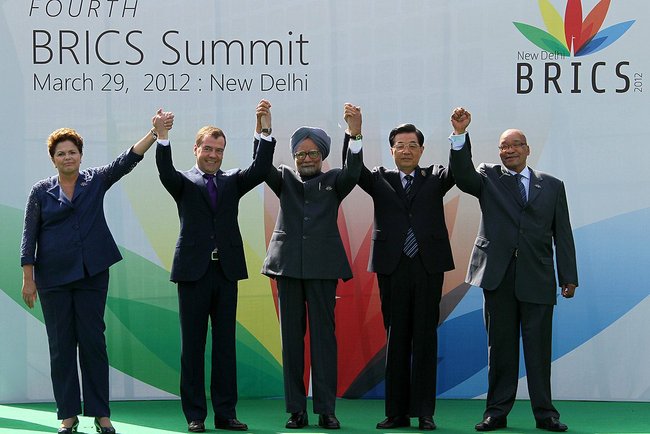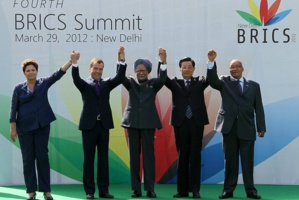What’s interesting, BRICS countries themselves more often protect their markets from the BRICS - in every third case. Except for South Africa, they are also included in the top 10 world protectionists. By 2015, the share of BRICS accounted for almost 40% of the world discriminatory measures, it is twice as much as in 2008.
GTA is monitoring of antiprotectionist and protectionist measures taken by governments, carried out by independent experts under the auspices of the London-based Centre for Economic Policy Research (CEPR) since the end of 2008. With the onset of the global crisis, countries began to actively use protectionism as an anti-crisis measure. As a consequence, the leaders of the G20 pledged to refrain from applying the mutual damage to prevent the risk of the destruction of the global trading system. So far, they have scarcely kept the promise: according to GTA, each liberalization measure is accounting for three discriminatory measures. As for BRICS, the proportion is one in four.
Given that almost one third of the restrictive measures, adopted in the world since the end of 2008, was adopted by the BRICS and only a fifth of the restrictions was abolished, it is doubtful that protectionism for BRICS is only a temporary response to the global crisis. GTA’s report says: BRICS Trading Strategy should be rethought.
Export of all of the BRICS countries, except China, has stagnated for the last four years and by the end of I quarter 2015, has decreased by 10-30%in comparison with the level of 2011, while China's export growth in 2014 actually stopped. Almost 60% of protectionist measures, adopted in the world over the past six years, affected at least one of the BRICS countries, their commercial interests were violated more than 2,700 times, thus there is no solidarity among the BRICS countries themselves - GTA report's author, CEPR co-director, Simon Evenett complains. Their trading strategy looks at best incoherent, he concludes: on the one hand, they seek to boost trade among themselves by generous credit support to exporters, on the other - are responsible for a third of cases of harm the commercial interests of each other. BRICS’ protectionism is not only quantitative but also qualitative: in general, they are less likely than other developing countries G20 to take restrictive measures, but these measures affect the number of goods more than in any other country.
Considering how often the BRICS countries become victims of ‘harm neighbor’ policies and the state of their exports, they should have already become world champions for the control of protectionism, says Evenett.
According to GTA’s database, India adopted most discriminatory measures among BRICS, in second place - Russia. Most restrictions are intended against China – both in the whole world, and among its partners in BRICS. China itself is often protected by the United States, Germany and Japan.
This incoherence is observed not only in BRICS: according to GTA, from 604 discriminatory measures taken by the European Union since the end of 2008, the majority - 226 - restrict the interests of any country of the European Union.
GTA is monitoring of antiprotectionist and protectionist measures taken by governments, carried out by independent experts under the auspices of the London-based Centre for Economic Policy Research (CEPR) since the end of 2008. With the onset of the global crisis, countries began to actively use protectionism as an anti-crisis measure. As a consequence, the leaders of the G20 pledged to refrain from applying the mutual damage to prevent the risk of the destruction of the global trading system. So far, they have scarcely kept the promise: according to GTA, each liberalization measure is accounting for three discriminatory measures. As for BRICS, the proportion is one in four.
Given that almost one third of the restrictive measures, adopted in the world since the end of 2008, was adopted by the BRICS and only a fifth of the restrictions was abolished, it is doubtful that protectionism for BRICS is only a temporary response to the global crisis. GTA’s report says: BRICS Trading Strategy should be rethought.
Export of all of the BRICS countries, except China, has stagnated for the last four years and by the end of I quarter 2015, has decreased by 10-30%in comparison with the level of 2011, while China's export growth in 2014 actually stopped. Almost 60% of protectionist measures, adopted in the world over the past six years, affected at least one of the BRICS countries, their commercial interests were violated more than 2,700 times, thus there is no solidarity among the BRICS countries themselves - GTA report's author, CEPR co-director, Simon Evenett complains. Their trading strategy looks at best incoherent, he concludes: on the one hand, they seek to boost trade among themselves by generous credit support to exporters, on the other - are responsible for a third of cases of harm the commercial interests of each other. BRICS’ protectionism is not only quantitative but also qualitative: in general, they are less likely than other developing countries G20 to take restrictive measures, but these measures affect the number of goods more than in any other country.
Considering how often the BRICS countries become victims of ‘harm neighbor’ policies and the state of their exports, they should have already become world champions for the control of protectionism, says Evenett.
According to GTA’s database, India adopted most discriminatory measures among BRICS, in second place - Russia. Most restrictions are intended against China – both in the whole world, and among its partners in BRICS. China itself is often protected by the United States, Germany and Japan.
This incoherence is observed not only in BRICS: according to GTA, from 604 discriminatory measures taken by the European Union since the end of 2008, the majority - 226 - restrict the interests of any country of the European Union.






